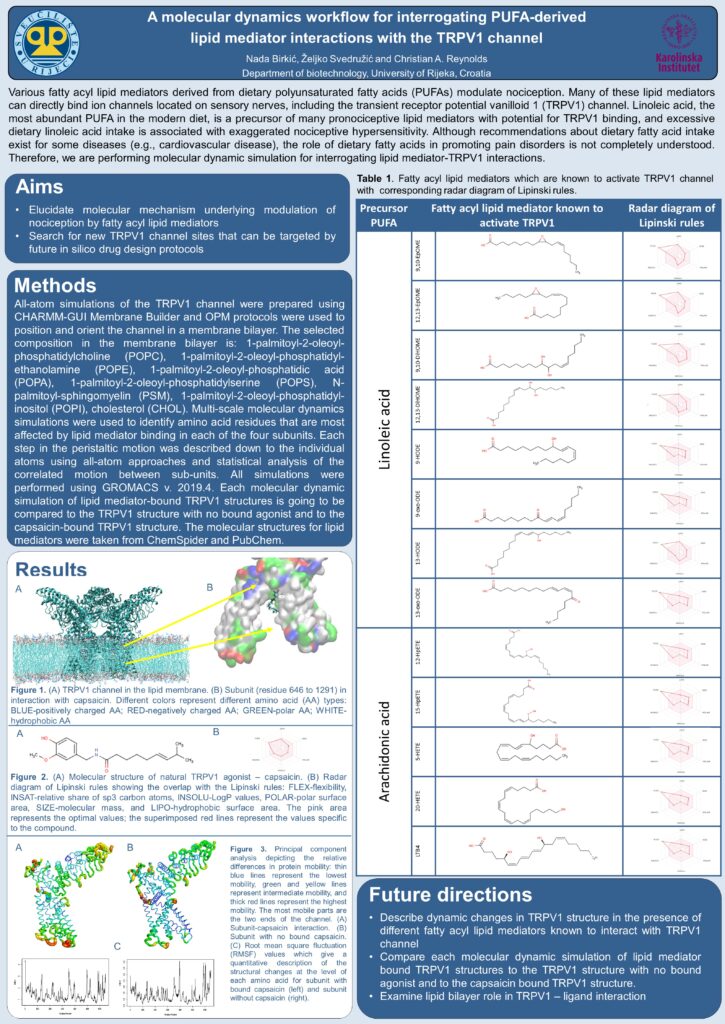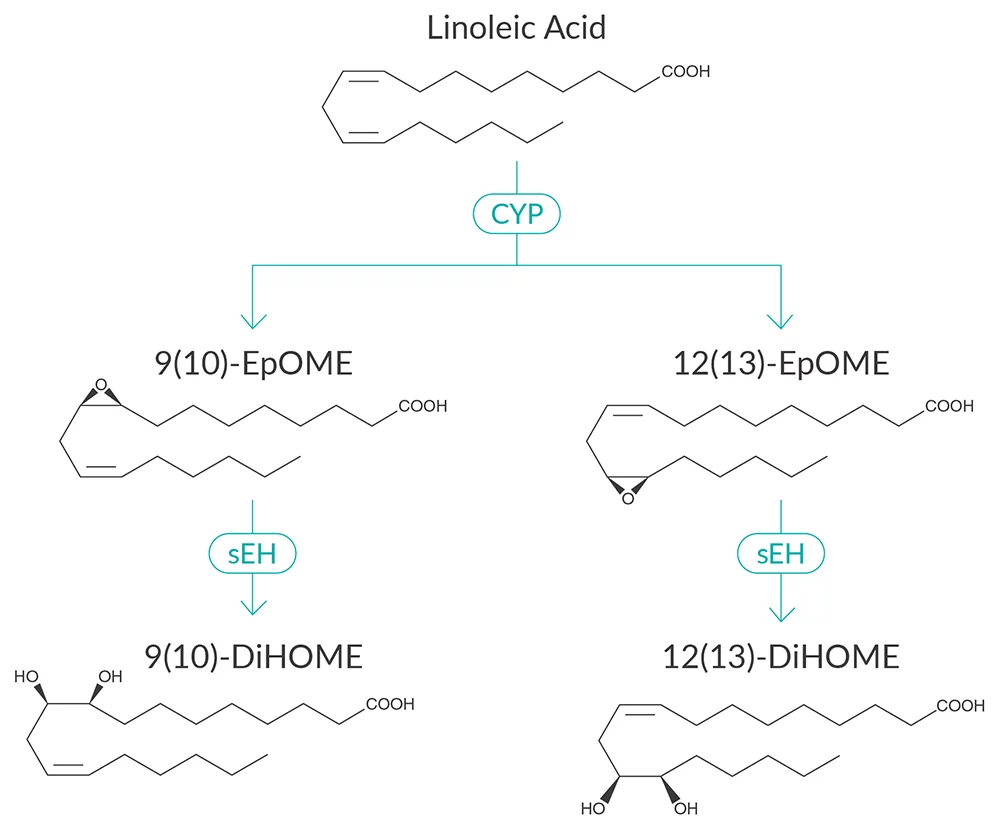Sepsa je ozbiljno zdravstveno stanje uzrokovano ozbiljnim sistemskim upalnim odgovorom na bakterijsku, gljivičnu ili virusnu infekciju. Sada je poznato da su protuupalni i vazoaktivni eikosanoidi endogeni kemijski signali koji orkestriraju reakciju na infekciju. Iako je uvaženo da eikosanoidi nastali kao odgovor na infekciju doprinose ishodima sepse, malo je studija pokušalo procijeniti korisnost upalnih lipidnih medijatora u stratifikaciji rizika. S obzirom na to da su eikosanoidi izvedeni iz polinezasićenih masnih kiselina koje sisavci dobivaju isključivo iz prehrambenih izvora, pretpostavljamo da prehrambene polinezasićene masne kiseline u prehrani mogu utjecati na reakcije na infekciju i / ili ishode sepse. Predložene studije podržat će razvoj nove multidisciplinarne istraživačke skupine na Sveučilištu u Rijeci koja će izvoditi i kliničke i translacijske studije. Projekt nastoji pružiti nove patofiziološke uvide i definirati ulogu prehrambenih polinezasićenih masnih kiselina u predviđanju ishoda u sepsi.
Excessive dietary linoleic acid promotes plasma accumulation of pronociceptive fatty acyl lipid mediators
Istaknuto
Various fatty acyl lipid mediators (LMs) derived from dietary polyunsaturated fatty acids (PUFAs) modulate nociception. The modern diet is rich in linoleic acid (LA), which may present a risk factor for developing pain conditions. Although recommendations about fatty acid intake exist for some diseases (e.g. cardiovascular disease), the role of dietary fatty acids in promoting pain disorders is not completely understood. Here we report that dietary linoleic acid content is associated with plasma accumulation of pronociceptive lipid mediators. Our findings provide mechanistic insights into exaggerated nociceptive hypersensitivity associated with excessive dietary linoleic acid intake and highlight potential biomarkers for pain risk stratification. We quantified plasma LMs in male and female rats fed one of two custom diets from the time of weaning through nine weeks of age using LC-MS/MS analysis. Rats were randomized to receive one of two modified AIN-76A rodent diets each containing 5.1% fat. The standard corn oil was replaced with a custom triglyceride blend rich in either LA or oleic acid (OA; 18:1n-9), a monounsaturated fatty acid that is not metabolized to form LMs. In general, rats maintained on the LA-rich diet displayed greater plasma accumulation of pronociceptive LMs derived from LA, while accumulation of antinociceptive LMs was greater in rats maintained on the OA-rich diet. Using this approach, we demonstrate that exposure to a diet rich in LA promotes plasma accumulation of pronociceptive LMs, which likely contributes the exaggerated nociceptive hypersensitivity associated with excessive dietary LA intake.

A molecular dynamic workflow for interrogating PUFA-derived lipid mediator interactions with the TRPV1 channel
Various fatty acyl lipid mediators derived from dietary polyunsaturated fatty acids (PUFAs) modulate nociception. Many of these lipid mediators can directly bind ion channels, including the Transient Receptor Potential Vanilloid 1 (TRPV1) channel located on sensory nerves. Linoleic acid, known as the most abundant PUFA in modern diet, is a precursor of many pronociceptive lipid mediators-potential TRPV1 binding molecules. Molecular dynamic simulations offers a powerful strategy for interrogating lipid mediator-TRPV1 interactions. The all-atom simulations of TRPV1 channel can be prepared using CHARMM-GUI Membrane Builder. OPM protocols are then used to position and orient the proteins in a lipid membrane bilayer. The systems is relaxed using a sequence of equilibration steps, with the temperature set to 310.15 K using Nose–Hoover coupling, and the pressure set to 1.0 bar using semi-isotropic Parinello–Rahman coupling.The system used in our simulations contains TIP3 water molecules, potassium ions, chlorine ions and lipid molecules. In order to ensure proper system relaxation, two minimization steps and four equilibration steps are used.The lipid composition in the membrane bilayer in all-atom system is fallowing: phosphatidylcholine (POPC), phosphatidylethanolamine (POPE), phosphatidic acid (POPA), phosphatidylserine (POPS), sphingomyelin (PSM), phosphatidylinositol (POPI), cholesterol (CHOL). Each of the molecular dynamic simulations are analyzed by comparing lipid meditor bound and capsaicin-bound structures. Taken together, molecular dynamic workflow can help elucidate molecular mechanism underlying pain modulation by lipid mediators. Although recommendations about fatty acid intake exist for some diseases (e.g. cardiovascular disease), the role of dietary fatty acids in promoting pain disorders is not completely understood.

